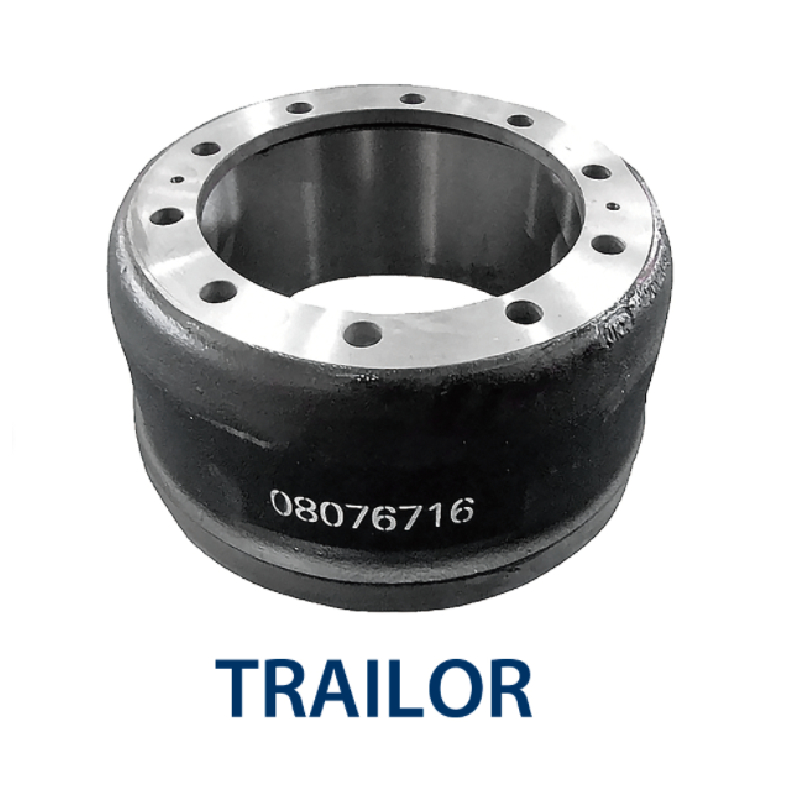സെപ് . 02, 2024 04:24 Back to list
3 types of drum brakes
Understanding the 3 Types of Drum Brakes
Drum brakes are a crucial component of many vehicles' braking systems. They are especially common in older cars and light trucks, providing a reliable means of slowing down or stopping a vehicle. While the basic principle of all drum brakes is similar, there are three primary types leading-trailing, duo-servo, and self-energizing drum brakes. Each configuration has its unique characteristics, advantages, and applications. Let’s delve into these types to better understand their features and functions.
1. Leading-Trailing Drum Brakes
Leading-trailing drum brakes are the most common type found in vehicles. This design features two brake shoes—one that leads and one that trails during the braking process. The leading shoe is designed to be pulled into contact with the drum by the rotation of the wheel, while the trailing shoe is pushed against the drum. This configuration allows for effective braking in both forward and reverse directions.
One of the significant advantages of leading-trailing drum brakes is their balanced braking performance. They provide good stopping power and are relatively easy to adjust. Additionally, they tend to wear evenly, which can lead to extended component life. However, while they offer reliability, their overall performance may not match that of disc brakes under high-demand conditions, such as in sports or heavy-duty vehicles.
Duo-servo drum brakes are primarily used in the rear brakes of many light trucks and some larger vehicles. This system utilizes two brake shoes—similar to leading-trailing designs—but incorporates a more complex interaction between the shoes to enhance braking force. With this configuration, the leading shoe not only contacts the drum but also serves to force the trailing shoe against the drum, effectively multiplying the braking force.
3 types of drum brakes

The main advantage of duo-servo drum brakes is their increased stopping power compared to leading-trailing systems. This extra force is particularly beneficial in heavier vehicles that require more robust braking capabilities. However, this type of brake is typically more complicated to manufacture and can be more challenging to adjust and maintain. Proper functioning relies on precise alignment and regular maintenance to ensure optimal performance.
3. Self-Energizing Drum Brakes
Self-energizing drum brakes, often found in more compact applications, utilize a unique mechanism that takes advantage of the rotation of the drum to increase braking efficiency. In this design, when the brake pedal is pressed, the rotation of the drum pushes the leading shoe into the drum with greater force, leading to self-energization. Essentially, the mechanical advantage created by this design can yield substantial braking force with less pedal pressure.
The primary advantage of self-energizing drum brakes is their efficiency. They can deliver strong braking performance even with a smaller design, which can lead to weight savings and improved fuel economy. However, self-energizing systems can be susceptible to overheating under heavy use due to the increased friction generated during operation, which can lead to brake fade.
Conclusion
In summary, the three types of drum brakes—leading-trailing, duo-servo, and self-energizing—each have unique characteristics that make them suitable for different applications. While leading-trailing systems are widely used for their reliability and simplicity, duo-servo designs provide enhanced braking power for heavier vehicles. Self-energizing brakes offer efficiency by maximizing force but require careful consideration of their limitations. Understanding these differences can help vehicle owners and enthusiasts make informed decisions regarding maintenance and upgrades to their braking systems, ensuring safety and performance on the road.
-
Brake Drum Man - High-Quality Drum Brake Drums & Brake Shoes for Reliable Performance
NewsJun.24,2025
-
High-Quality Brake Drum Kamaz – Durable Drum Brake Drum & Brake Shoe Replacement
NewsJun.10,2025
-
High-Quality Brake Drum Liza for Drum Brake Systems - Superior Durability and Performance
NewsJun.10,2025
-
High-Quality Brake Drum Kamaz – Durable Drum Brake Drum & Brake Shoe Solutions
NewsJun.10,2025
-
Durable Kamaz Brake Drums High-Performance Truck Parts
NewsJun.09,2025
-
Premium Brake Drum Maz Kit with Shoes Enhanced Braking
NewsJun.09,2025
